
Related
Authorities in Boston have designated as the official protest an area enclosed by a maze of overhead netting, razor wire and chain link fence. To some it resembles an internment camp, to others Guantanamo Bay. Today lawyers file suit to overturn the “free speech zone.” [includes rush transcript]
Boston is known as the birthplace of US democracy. But many activist groups and civil liberties organization”s say that tradition is being trampled on by the security apparatus that has been amassed here in Boston to guard the Democratic National Convention. Yesterday, there was a large permitted rally sponsored by the ANSWER coalition. There was a sizable presence of riot police and other security forces. Largely, the march passed without a major incident. But at the very end of the procession through Boston, police arrested one demonstrator in an incident that his lawyers are saying was a case of racial profiling. Here is how a local activist, Scott Cooper, who witnessed the arrest described the scene.
- Scott Cooper, who witnessed the arrest yesterday of one of the demonstrators at the antiwar march.
With the exception of a handful of permitted marches and rallies, people who want to demonstrate their views during the DNC have been told they are free to do so, but only from the discomfort of a so-called free speech zone. Protest organizers refer to it as an internment camp or a detention center. The area the authorities have designated as the official protest area is enclosed by a maze of overhead netting, razor wire and chain link fence. The FleetCenter, where the convention is taking place, is barely visible through the abandoned elevated rail lines and green girders overhead. At this weekend”s Boston Social Forum, there was quite a bit of discussion about the protest pit. Here is South African poet Dennis Brutus speaking at the forum yesterday.
- South African poet Dennis Brutus, speaking yesterday at the Boston Social Forum.
Last week, U.S. District Judge Douglas P. Woodlock called the conditions for protesters in Boston “an affront to free expression” and a “festering boil.” But he refused to order changes to the so-called free speech zone. In response, a coalition of protest groups and civil liberties organizations has appealed to the 1st U.S. Circuit Court of Appeals. Meanwhile, late last week authorities announced they were lowering the maximum number of protesters allowed in the pit from 4,000 down to 1,000, they said because of concerns of overcrowding. So far it appears that the only people that have actually gone into the pit have been activists protesting the official protest area.
- Urszula Masny-Latos, executive director of the National Lawyers Guild’s Massachusetts chapter.
Transcript
AMY GOODMAN: On Sunday, there was a large permitted rally sponsored by A.N.S.W.E.R. Coalition. There was a sizeable presence of riot police and other security forces. Largely the march went without major incident, but at the very end of the procession through Boston, police arrested one demonstrator in an incident that his lawyers are saying was a case of racial profiling. Here is how a local activist, Scott Cooper, who witnessed the arrest, described the scene.
SCOTT COOPER: What we just saw here was what looked like a provocation by the police against the march. There were two uniformed police officers and a plain clothes officer dressed to look like a marcher, you know, baseball cap, no indication that he was a cop except for the gun bulge and as the march went by, they pointed to a man who looked to be in his late 20’s. I think he was Pakistani. They pointed to him and all of a sudden walked right into the crowd and grabbed him from behind. He turned around as if to say, what did I do? And then they dragged him into this alley. I was there before the whole crowd turned around, I happened to be watching and standing there and he was trying to shout his name out so somebody could know his name and they pulled him down out of earshot and the whole time I could read his lips, what did I do, what’s this all about? And then they, the plain clothed officer seemed to be calling the shots. There were a whole bunch of uniformed cops. They formed a line to keep the people who now started to chant, let him go, let him go, and wanted to go down the alley to company him and they dragged him down, all the way down this alley and put the straps around him. So who knows? I mean it could have been somebody they were targeting for immigration or something like that. It could have been a deliberate attempt to keep the march, you know, split up the march.
AMY GOODMAN: Scott Cooper who witnessed the arrest yesterday, one of the demonstrators at the anti-war march. With the exception of handful of permitted marches and rally’s, people who want to demonstrate their views during the D.N.C. are told they are free to do so, but only from the discomfort of a so-called free-speech zone. Protest organizers refer to it as an internment camp or a detention center. The area the authorities have designated as the official protest area is closed by a maze of overhead netting, razor wire and chain link fence. The Fleet Center, where the convention is taking place, is barely visible through the abandoned elevated rail lines and green girders overhead. At this weekend’s Boston Social Forum, there was quite a bit of discussion about the so-called protest pit. Here’s South African poet Dennis Brutus speaking at the Boston Social Forum.
DENNIS BRUTUS: Well that’s the designated free-speech zone and we are being told that if you want to speak politically next week, at the time of the convention, you will have to agree to become part of that corral and to be penned in there and to submit to the controls and you know, in Los Angeles, they had the dangerous experience of people being penned in an area and then being told by the police, you are given a certain time to disperse, and there was only one single exit, and 1,000 people trying to get out and then the police charged them on horseback. And I am telling you, you must be prepared to take a stand on this issue. You have to say—(applause)—you have to say that all of Boston is a free-speech zone. And there is one serious consequence if you don’t. You may lose your voice and they will roll over you if you submit to that restraint. If you submit to that encroachment on your freedom, you will find not only will you lose your voice but the time may come in November when suddenly there’s a red alert and then you are told you’ve lost your vote.
AMY GOODMAN: South African poet Dennis Brutus speaking on Sunday at the Boston social forum. Last week, U.S. District judge Douglas Woodlock called the conditions for protesters in Boston “an affront to free expression and “a festering boil.” Again, that wasn’t a protester describing the conditions, that was the judge. But he refused to order changes to the so-called free-speech zone. In response, a coalition of protest groups and civil liberty organizations has appealed to the first circuit court of appeals. Meanwhile, late last week, authorities announced they are lowering the maximum number of protesters allowed in the pit from 4,000 down to 1,000. They said because of concerns of overcrowding. So far, it appears the only people that have actually gone into the pit have been activists protesting the official protest area. We are joined right now by Urszula Masny-Latos who is executive director of the National Lawyers Guild, Massachusetts chapter. Welcome to Democracy Now!.
URSZULA MASNY-LATOS: Thank you for having me.
AMY GOODMAN: It is very good to have you with us. Well, can you talk about this?
URSZULA MASNY-LATOS: Well first of all, it was not the decision of city officials to lower the number of people in the zone. This was the order that came from the judge. The judge was really appalled at what he saw during the tour of the site on Thursday. And after touring the site, the judge ordered the city to allow only up to 1,000 people in the zone and in addition to that, he ordered the city to make one more exit from the zone because right now, there’s only one access area and a path and one exit from the area, which is very problematic, because it’s under a train tracks and at a point where people are supposed to leave the area, the tracks are quite low. So anyone who is taller than five feet five would not be able to leave the area without ducking.
AMY GOODMAN: How has it come to this point and how can you have a situation where the judge, not the protesters, is using terms like the site is an “affront to free expression” and a “festering boil,” and yet ultimately rules, well refuses to order the changes to the zone?
URSZULA MASNY-LATOS: It’s very difficult to speculate what influenced the judge’s decision. However, during the hearing on Thursday, the judge met with Secret Service agents twice. He ordered two breaks and during those breaks he had briefings with several security Secret Service individuals. So after those briefings, he came back from his chamber and he delivered his ruling. How we got here? We started the process a long time ago, and we had our first meeting with the police department and the representatives from the city and the Democratic National Convention committee in October of 2003. And we continued those meetings until July 14. During our first meetings, everything looked like we might be able to have a great space for protesters, the city would respect everyone who would come here to exercise their first amendment rights. However, during our last meeting on July 14, we learned that the city actually changed its plans and decided to, first of all, make the area smaller than what was planned, put double fencing around the area, put netting above the area and we also learned that no one would be allowed to have tables for literature in the whole south zone, which is quite large, and the third issue that was presented to us on July 14 was that the city decided to put a fence around the whole south zone. So we are talking about a time period of less than two weeks before the convention. So we really didn’t have a chance to discuss any other alternatives and the only thing that we were forced to do was to do was to file a lawsuit.
AMY GOODMAN: And what do you expect to happen now?
URSZULA MASNY-LATOS: Well, we don’t know. We were supposed to file a briefs this morning and hopefully the First circuit court decides today what the city is supposed to do with the area.
AMY GOODMAN: Urszula Masny-Latos, I want to thank you very much for being with us. Executive director of the National Lawyers Guild, the Massachusetts chapter.

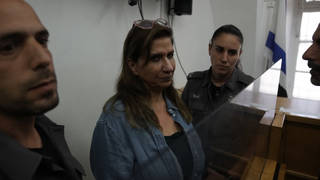
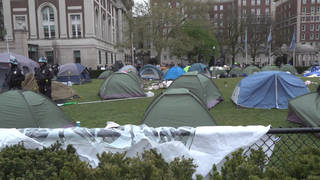
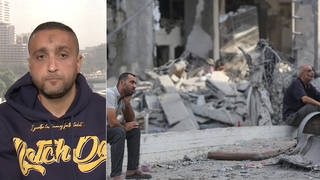
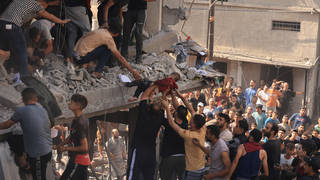





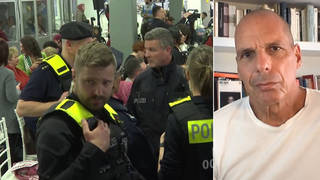

Media Options